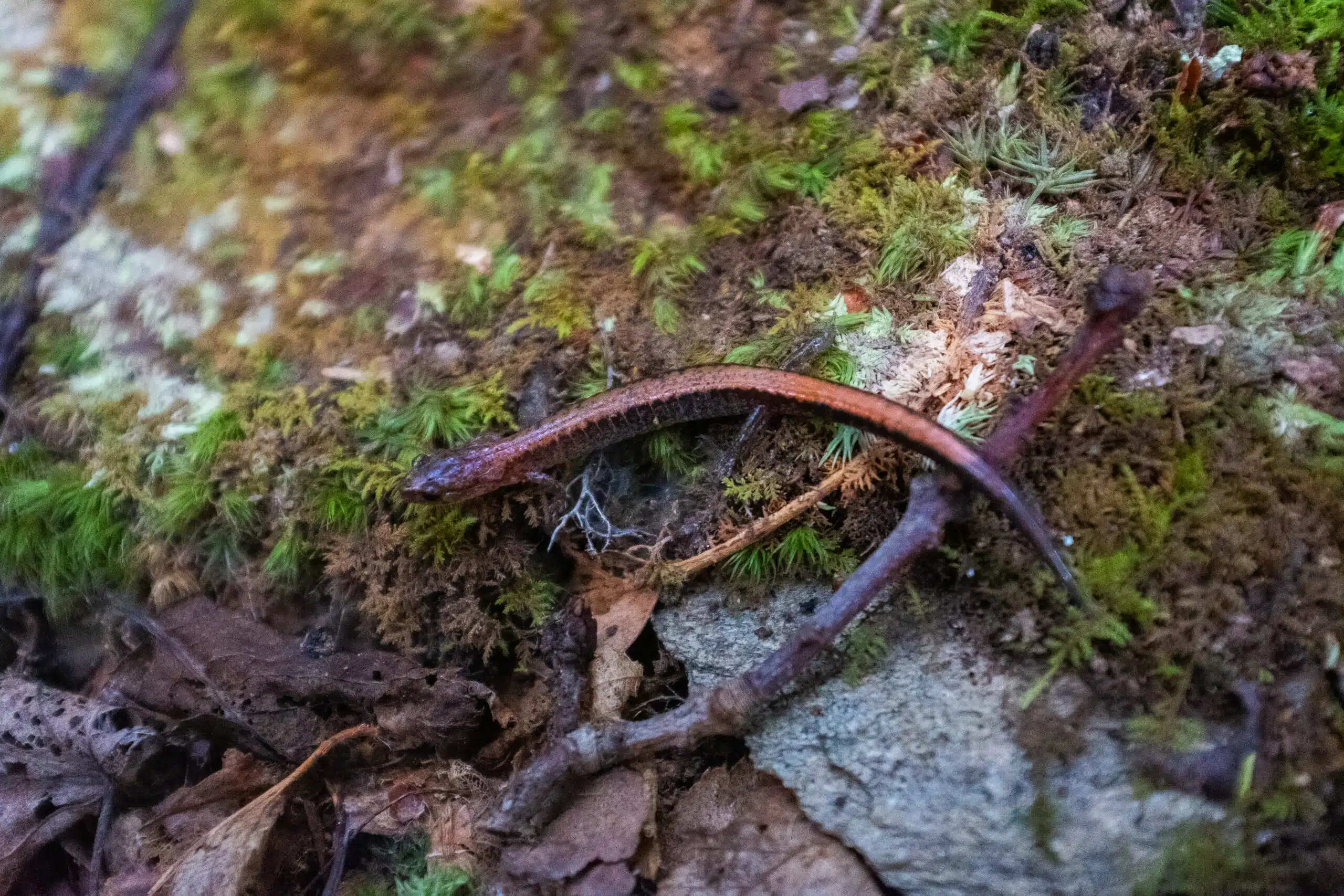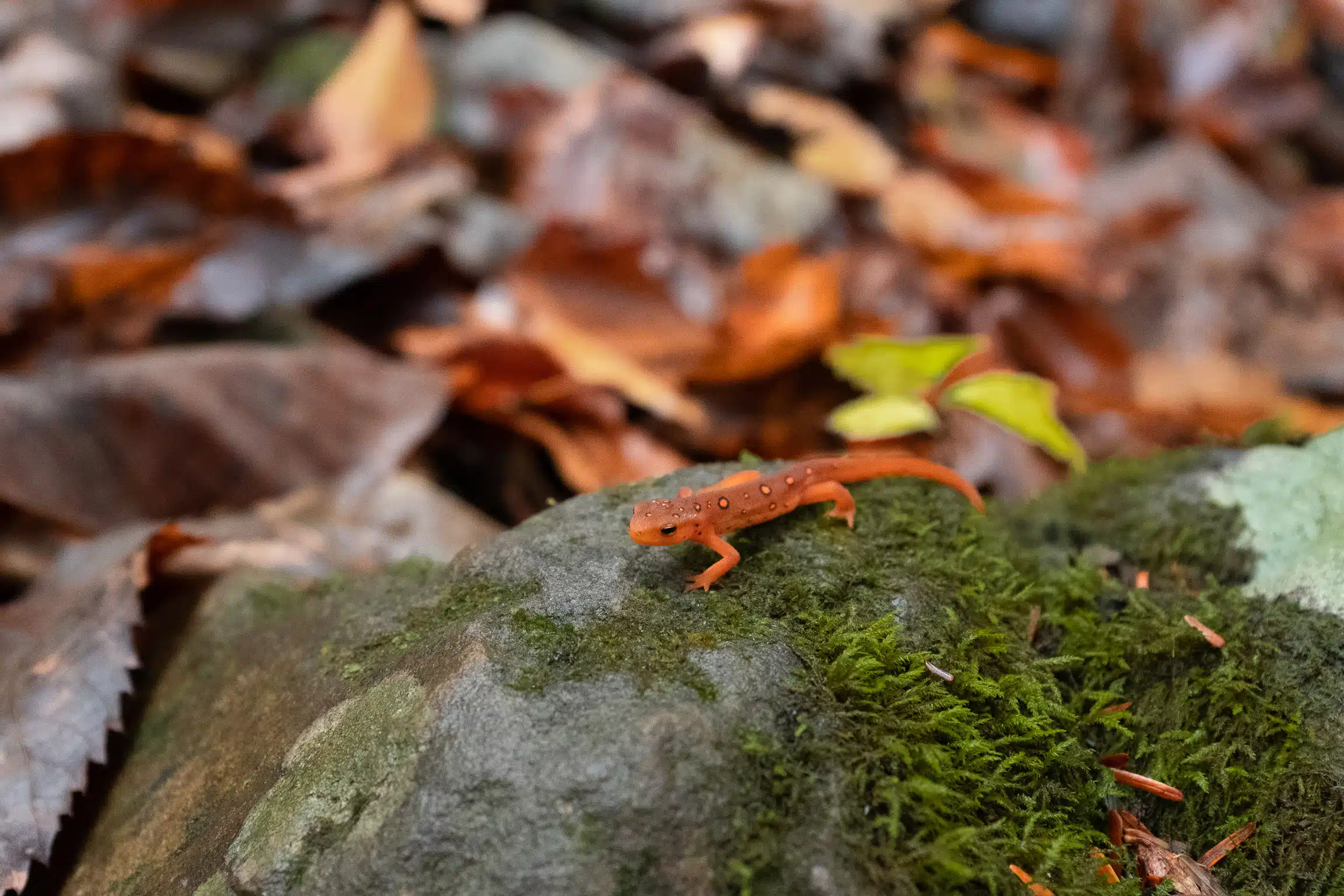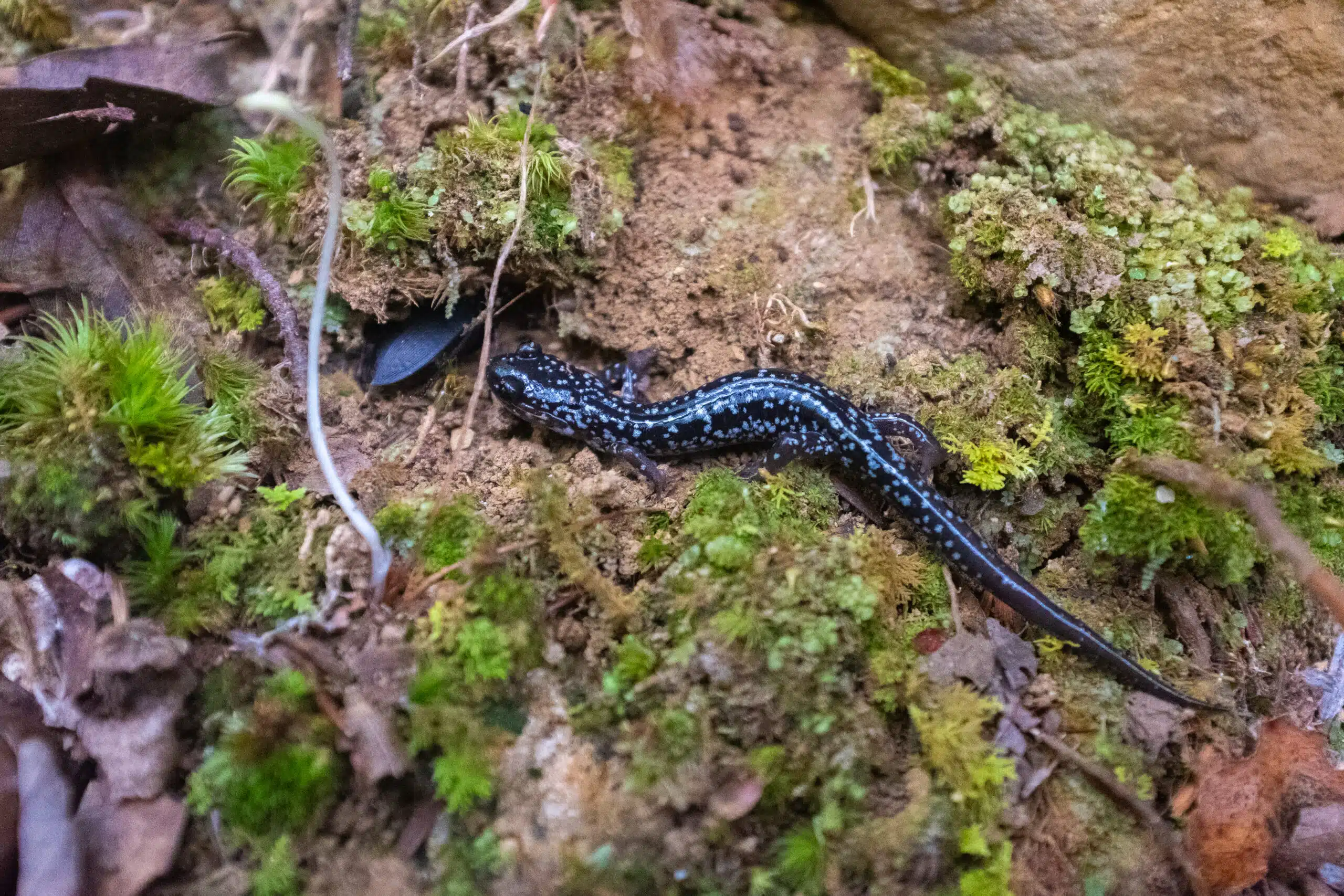With the moist skin of a frog, but the shape of a lizard, salamanders are bizarre creatures. Virginia is home to over 50 different species of salamanders, many of which can be found in your own backyard here in Loudoun county. Salamanders generally live in moist habitats, with some species living terrestrially under logs and rocks and others living aquatically in streams and pools. A large portion of salamanders will switch between living on land and in the water during different stages in their lives.
As both a predator to some species (like insects and slugs) and a prey for others (like birds and snakes), they play a very important role in the ecosystems they live in. They are sensitive creatures and require a very healthy habitat to survive. Salamanders, and many other amphibians, are considered to be “indicator species.” This means their presence in an ecosystem suggests that the forest and water quality is very good in that area and is likely not very polluted.
Salamanders vs Newts
While all newts are considered salamanders, not all salamanders are newts! Most salamanders (including newts) start off their life as aquatic larva (similar to how frogs start as tadpoles). However, newts have a juvenile life stage known as an “eft”. Efts live terrestrially before evolving into an adult form that is mostly aquatic. Most other species of non-newt salamanders live terrestrially as adults. One of the most common newts found here is the eastern newt (pictured above), which is easily identified by its bright red eft form. The bright color is a warning to predators that it is toxic and should not be eaten.
Salamander Conservation
Because salamanders are so sensitive to environmental changes, their populations are declining. Things like habitat fragmentation and pollution are significant threats to them. There are a number of things you can to do to help out these amphibians:
- Avoid touching/handling the salamander. They are delicate creatures and even the natural salts/oils on your skin can be harmful. If you must handle a salamander, make sure to wash and wet your hands and be very gentle.
- Many salamanders live under rocks, leaf litter, and logs. If you lift a rock/log, be sure to gently place it back right where you found it to preserve their home.
- Avoid polluting by limiting your use of pesticides, herbicides, and fertilizer. These harmful chemicals can be directly absorbed through salamanders’ skin.
Want to learn more about Salamanders? Check out these resources:



